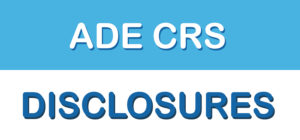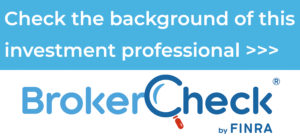Taking Advantage of Employer-Sponsored Retirement Plans
Understand your employer-sponsored plan
Before you can take advantage of your employer’s plan, you need to understand how these plans work. Read everything you can about the plan and talk to your employer’s benefits officer. You can also talk to a financial planner, a tax advisor, and other professionals. Recognize the key features that many employer-sponsored plans share:
- Your employer automatically deducts your contributions from your paycheck. You may never even miss the money — out of sight, out of mind.
- You decide what portion of your salary to contribute, up to the legal limit. And you can usually change your contribution amount on certain dates during the year or as needed.
- With 401(k), 403(b), 457(b), SEP IRAs, and SIMPLE plans, you contribute to the plan on a pre-tax basis. Your contributions come off the top of your salary before your employer withholds income taxes.
- Your retirement plan may let you make after-tax Roth contributions — there’s no up-front tax benefit but qualified distributions are entirely tax free.
- Your employer may match all or part of your contribution up to a certain level. You typically become vested in these employer dollars through years of service with the company.
- Your funds grow tax deferred in the plan. You don’t pay taxes on investment earnings until you withdraw your money from the plan.
- You’ll pay income taxes (and possibly an early withdrawal penalty) if you withdraw your money from the plan.
- If your plan allows loans, you may be able to borrow a portion of your vested balance, up to specified limits.
- Your creditors cannot reach your plan funds to satisfy your debts.
Contribute as much as possible
The more you can save for retirement, the better your chances of retiring comfortably. If you can, max out your contribution up to the legal limit (or plan limits, if lower). If you need to free up money to do that, try to cut certain expenses.
Why put your retirement dollars in your employer’s plan instead of somewhere else? One reason is that your pre-tax contributions to your employer’s plan lower your taxable income for the year. This means you save money in taxes when you contribute to the plan — a big advantage if you’re in a high tax bracket. For example, if you earn $100,000 a year and contribute $10,000 to a 401(k) plan, you’ll pay income taxes on $90,000 instead of $100,000. Keep in mind that distributions will be subject to income tax.
Another reason is the power of tax-deferred growth. Your investment earnings compound year after year and aren’t taxable as long as they remain in the plan. Over the long term, this gives you the opportunity to build an impressive sum in your employer’s plan. You should end u½p with a much larger balance than somebody who invests the same amount in taxable investments at the same rate of return.
For example, say you participate in your employer’s tax-deferred plan (Account A). You also have a taxable investment account (Account B). Each account earns 6% per year. You’re in the 24% tax bracket and contribute $5,000 to each account at the end of every year. After 40 years, the money placed in a taxable account would be worth $567,680. During the same period, the tax-deferred account would grow to $820,238. Even after taxes have been deducted from the tax-deferred account, the investor would still receive $623,381. (Note: This example is for illustrative purposes only and does not represent a specific investment.)
Roth contributions are after-tax contributions, and therefore do not offer the up-front pre-tax benefit. However, Roth earnings grow tax-deferred and qualified distributions from Roth accounts are tax free. A qualified distribution is one made after five years and the account owner reaches age 59½, becomes disabled, or dies.
Capture the full employer match
If you can’t max out your 401(k) or other plan, you should at least try to contribute up to the limit your employer will match. Employer contributions are basically free money once you’re vested in them (check with your employer to find out when vesting happens). By capturing the full benefit of your employer’s match, you’ll be surprised how much faster your balance grows. If you don’t take advantage of your employer’s generosity, you could be passing up a significant return on your money.
For example, you earn $30,000 a year and work for an employer that has a matching 401(k) plan. The match is 50 cents on the dollar up to 6% of your salary. Each year, you contribute 6% of your salary ($1,800) to the plan and receive a matching contribution of $900 from your employer.
Evaluate your investment choices carefully
Most employer-sponsored plans give you a selection of mutual funds or other investments to choose from. Make your choices carefully. The right investment mix for your employer’s plan could be one of your keys to a comfortable retirement. That’s because over the long term, varying rates of return can make a big difference in the size of your balance.
Note: Before investing in a mutual fund, carefully consider the investment objectives, risks, charges, and expenses of the fund. This information can be found in the prospectus, which can be obtained from the fund. Read it carefully before investing.
Research the investments available to you. How have they performed over the long term? How much risk will they expose you to? Which ones are best suited for long-term goals like retirement? You may also want to get advice from a financial professional (either your own or one provided through your plan), who can help you pick the right investments based on your personal goals, your attitude toward risk, how long you have until retirement, and other factors. Your financial professional can also help you coordinate your plan investments with your overall investment portfolio.
Know your options when you leave your employer
When you leave your job, your vested balance in your former employer’s retirement plan is yours to keep. You have several options at that point, including:
- Taking a lump-sum distribution. Before choosing this option, consider that you’ll pay income taxes and possibly a penalty on the amount you withdraw. Plus, you’re giving up the continued potential of tax-deferred growth.
- Leaving your funds in the old plan, growing tax deferred. (Your old plan may not permit this if your balance is less than $5,000 ($7,000 in 2024), or if you’ve reached the plan’s normal retirement age — typically age 65.) This may be a good idea if you’re happy with the plan’s investments or you need time to decide what to do with your money.
- Rolling your funds over to an IRA or a new employer’s plan (if the plan accepts rollovers). This may also be an appropriate move because there will be no income taxes or penalties if you do the rollover properly (your old plan will withhold 20% for income taxes if you receive the funds before rolling them over, and you’ll need to make up this amount out of pocket when investing in the new plan or IRA). Plus, your funds continue to potentially benefit from tax-deferred growth .
Distributions from traditional retirement savings accounts and non-qualified distributions from Roth accounts will be subject to income tax. In addition, distributions prior to age 59½ will be subject to a 10% penalty, unless an exception applies.
Thanks for checking out the blog.
Gregory Armstrong, CFP®
This material is for general information only and is not intended to provide specific advice or recommendations for any individual. There is no assurance that the views or strategies discussed are suitable for all investors or will yield positive outcomes. CDs are FDIC Insured to specific limits and offer a fixed rate of return if held to maturity, whereas investing in securities is subject to market risk including loss of principal. This material was prepared by LPL Financial.
The opinions voiced in this material are for general information only and are not intended to provide specific advice or recommendations for any individual. To determine which investment(s) may be appropriate for you, consult your financial advisor prior to investing. All performance referenced is historical and is no guarantee of future results. All indices are unmanaged and cannot be invested into directly.
The information provided is not intended to be a substitute for specific individualized tax planning or legal advice. We suggest that you consult with a qualified tax or legal advisor.
LPL Financial Representatives offer access to Trust Services through The Private Trust Company N.A., an affiliate of LPL Financial.
Gregory Armstrong is a Registered Representative with and Securities are offered through LPL Financial, member FINRA/SIPC Investment advice offered through ADE, LLC, a registered investment advisor. Armstrong Dixon and ADE, LLC are separate entities from LPL Financial.
This communication is strictly intended for individuals residing in the state(s) of CO, DE, DC, FL, MD, MO, NY, NC, OR, PA, VA and WV. No offers may be made or accepted from any resident outside the specific states referenced.
Securities and insurance offered through LPL or its affiliates are: 









